The Minolta Alpha/Maxxum or Minolta Dynax 7 (as mine is, and as I shall from henceforth be calling it) was released in 2000 and was about as sophisticated as any 35mm SLR ever got.
Film cameras had nigh on a century of dominance of photography, but at the turn of the last century, their days were numbered. The last-gasp innovation of APS film had not set the world on fire and looming on the horizon were digital cameras that could record our lives, produce instant results that we could immediately review and push our expectations of image quality and light sensitivity beyond what is possible using chemistry.
As this film era came to an end the photographic giants produced some lovely cameras – Film SLRs were at their most sophisticated and in those last few years some amazing SLRs were created. This article seeks to look at one such camera from the company formerly known as Minolta.
Minolta Dynax 7 / Alpha 7 / Maxxum 7
The Minolta Dynax 7 had multi-mode metering, memorized the settings of the last 5 films shot, had shutter speeds up to 1/8000th of a second, allowed customization of just about every feature (so if you want your exposure counter to count down rather than up, and for the film leader to be left out of the cassette after rewind, you are in luck!)
All this is set via readable menu items selected on a control panel hidden beneath a magnetically latched metal hinged door. The Minolta Dynax 7 supports in-lens motors, has 9 AF points in the viewfinder – the central one being a highly accurate ‘double cross’ and (possibly unique for a film SLR) featured a rear display that makes setting the custom functions a doddle and still fools people to this day into thinking it is a DSLR.
The Minolta Dynax 7 was not the top of the pile, that position was taken by Minolta’s last bid to produce a professional film camera, released a few years before, which was the Dynax 9. The 9 is a titanic beast, but it never included quite as much technology and features as Minolta packed into the 7, and had to be retrofitted to use lenses with built in motors (SSM in Minolta’s nomenclature).
They even gave the Minolta Dynax 7 a special mode that emulated the company’s (as then unique) Smooth Trans Focus lens, by actually adjusting the position of the diaphragm blades of the lens during exposure (tripod required). But the thing that set the 7 apart from the crowd was a feature that Minolta had been re-introducing over the previous 5 years. Dials. Knobs. Switches. Lots of ’em.
While so many of Minolta’s cameras since the introduction of the 7000 in 1985 had relied on adjustment by pressing a button and moving a wheel (or in the early days a jog switch) Minolta had started, with their 600si, to bring back dedicated controls and knobs. On the Minolta Dynax 7 they brought this to a wonderful ergonomic head, with just about every camera function being controllable from its own dial, switch or button. In all it has 10 dials, 13 buttons (not counting two lock buttons on dials), 4 switches and a multi-controller – and that is without getting into latches, lens releases and covers, or the sensors on the viewfinder and grip.
The darn thing positively bristles with controls. The only camera to rival it was the digital version, the Konica Minolta 7D, which was a camera so frighteningly difficult to mass produce because of all the dials, switches and levers that it required a lot of expensive hand assembly and consequently suffered a certain amount of QA issues (which may, in the end, have played a part in hastening KMs departure from the camera business).
But with the Minolta Dynax 7 they got it right.
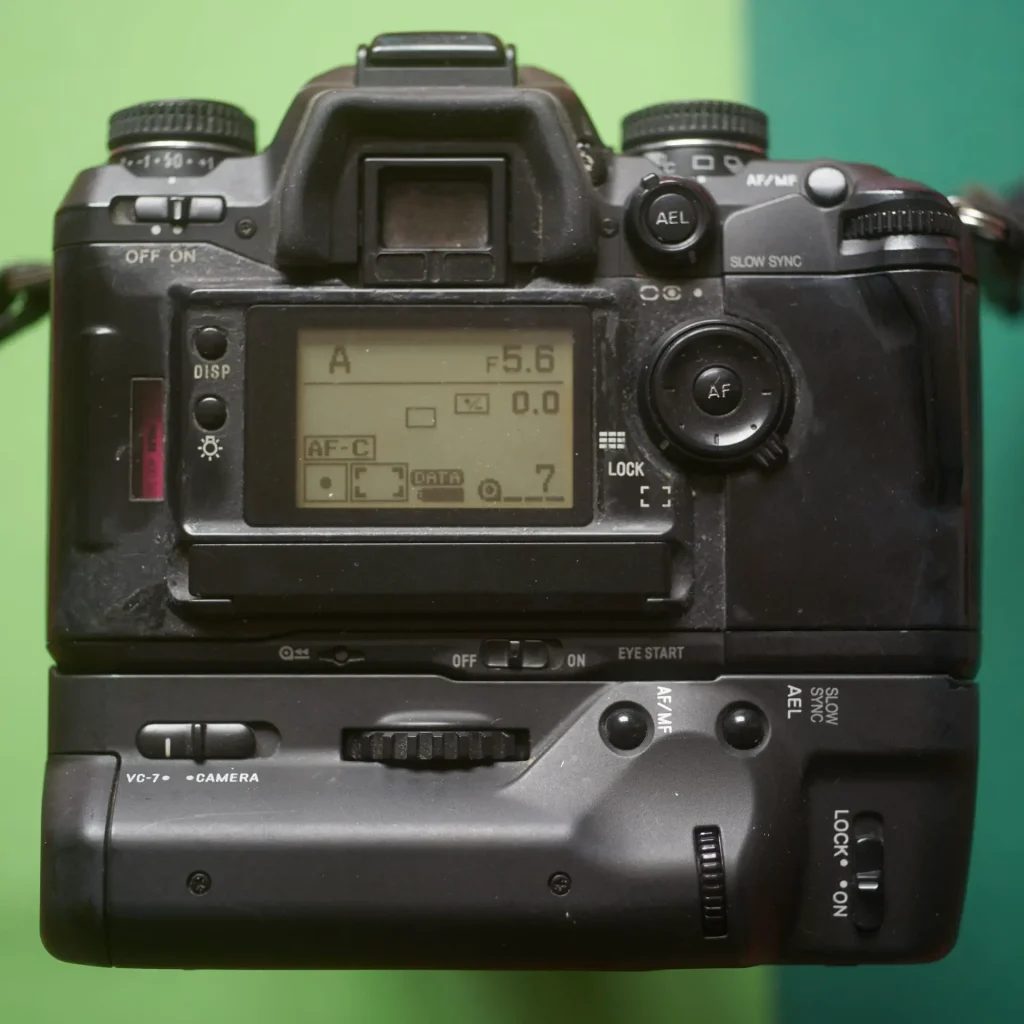
Even the battery grip is well designed, allowing use of AA batteries, improving portrait handling and communicating with the camera via some contacts that engage with a slot under the camera. The grip is designed so that your hand is in the same position relative to the lens in portrait or landscape formats. When fitted, the battery grip pushes the control count up by another 7.
So what’s not to like?
Well the hot shoe is Minolta’s own proprietary iISO shoe, which is unusual and might put some people off, but it is a good design. It had been around for about 10 years by the time the Minolta Dynax 7 came out, and would still be used (by Minolta and then Sony) for another 10; so flashes that are compatible are not rare – and it also uses Minolta’s IR remote triggering which is still supported by Sony’s current flashes.
The one sticky issue from a handling point of view, would not have become apparent immediately – the rubberized covering for the bits of the body where leather or leatherette would once have been used felt fine at first, but over time it would degrade, becoming tacky – which makes it unpleasant to handle and turns the camera into a dust magnet. This was a fault shared by other cameras of the period and can be solved by the careful removal of said rubberized covering with alcohol and a soft scraper.
The one thing you should not use the Minolta Dynax 7 for is Infra-Red photography. This is because it does not use conventional sprockets to move and measure the film, instead it has a little IR emitter and sensor inside the back that counts sprocket holes and makes it possible to change films mid-roll and then pick them up again with less wastage. The down-side is that the IR emitter will fog IR film.
One weak point is partially due to a ‘safety’ feature. The release for the back will only operate if a film has been rewound – otherwise the latch just moves freely but does not release the back – this can lead to new owners who are unfamiliar with the camera to think that it is broken and try to force the back open – which will break the plastic latch for the back. The normal approach in such circumstances of looking for a rear door from a dead donor camera is complicated by all of the stuff integrated into the back (11 control buttons/switches and a large LCD panel). Don’t force the back.
Should you ever need to open the back without rewinding the film, you can disable the latch safety feature with an ‘easter egg’ style button combination:
- Turn the power off at the main switch.
- While pressing the ISO button under the magnetic cover and the AE-Lock buttons, turn the main switch on.
- The display should now show “Back cover can now be opened”
To cancel without opening the back, repeat steps 1 and 2.
And now some photographs taken with the Minolta Dynax 7…
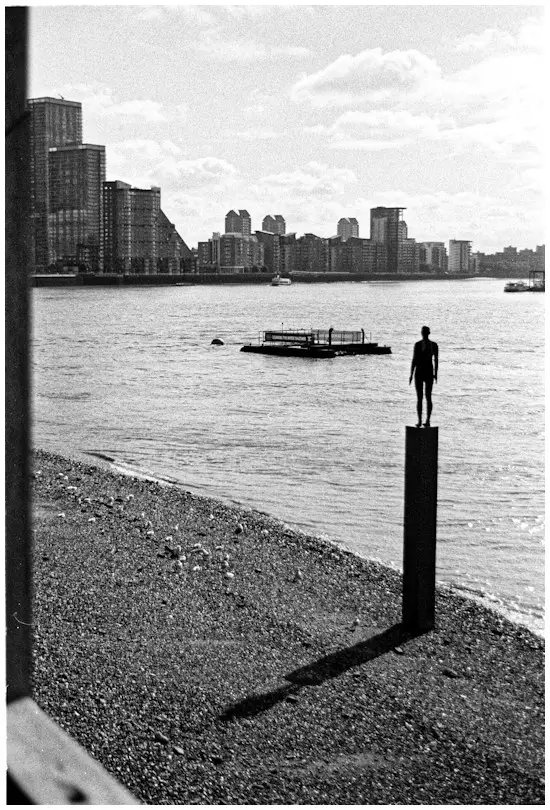
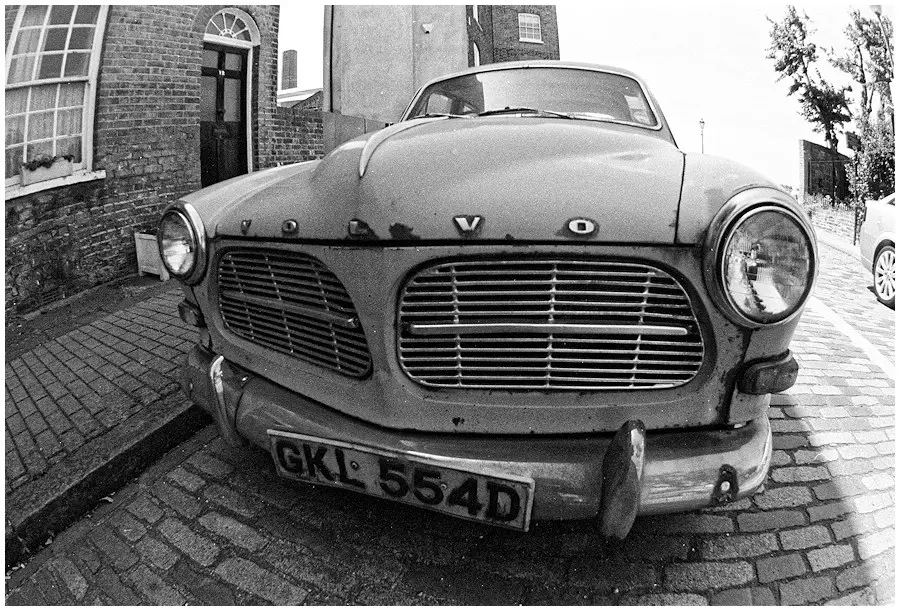
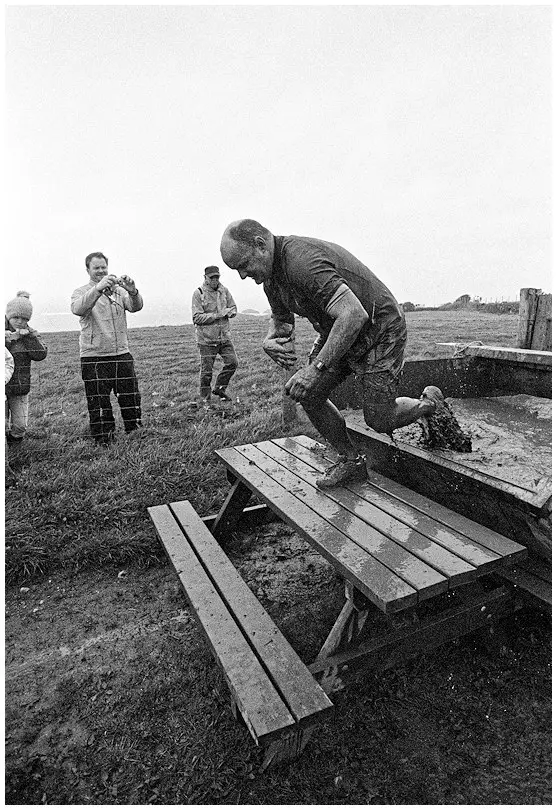
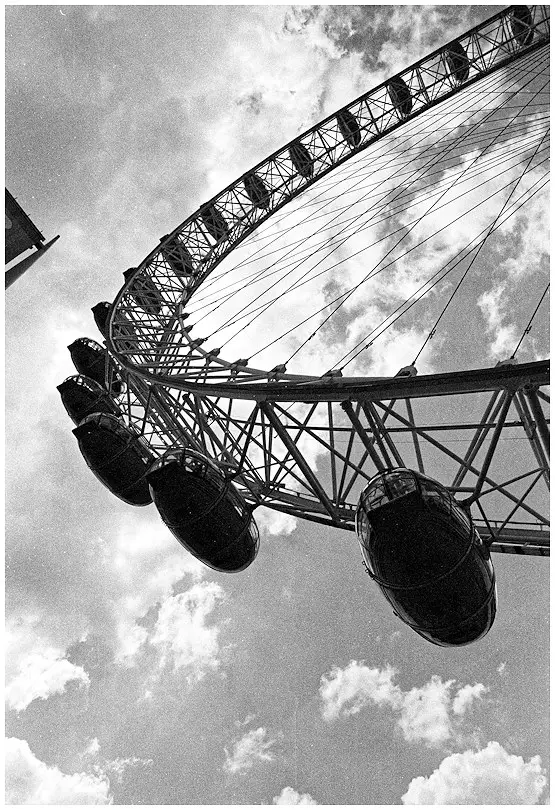
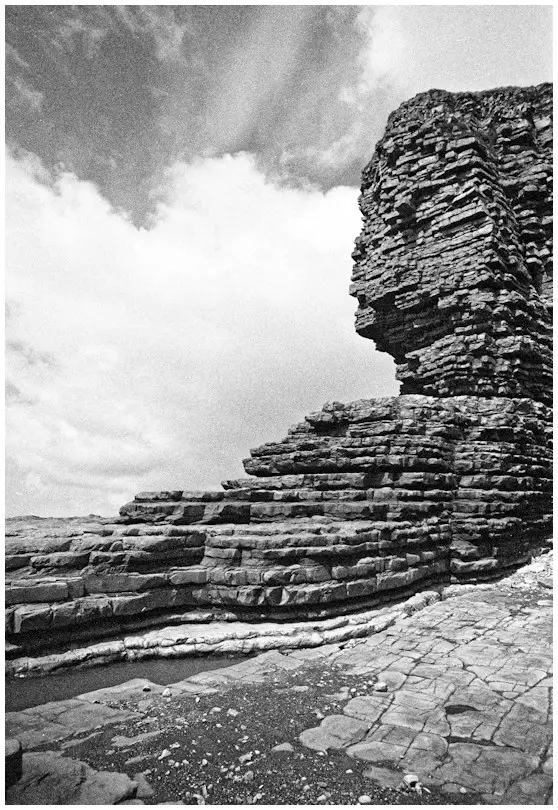
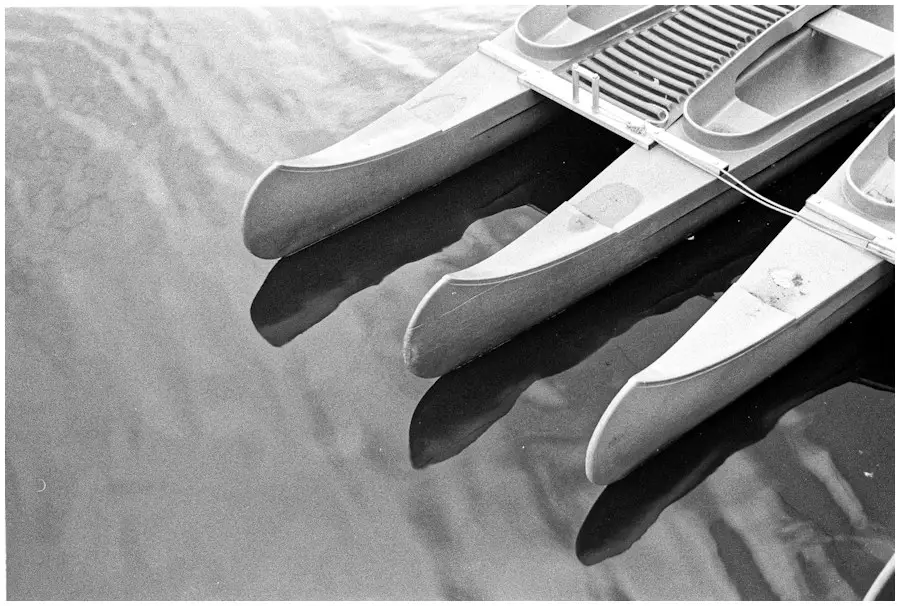
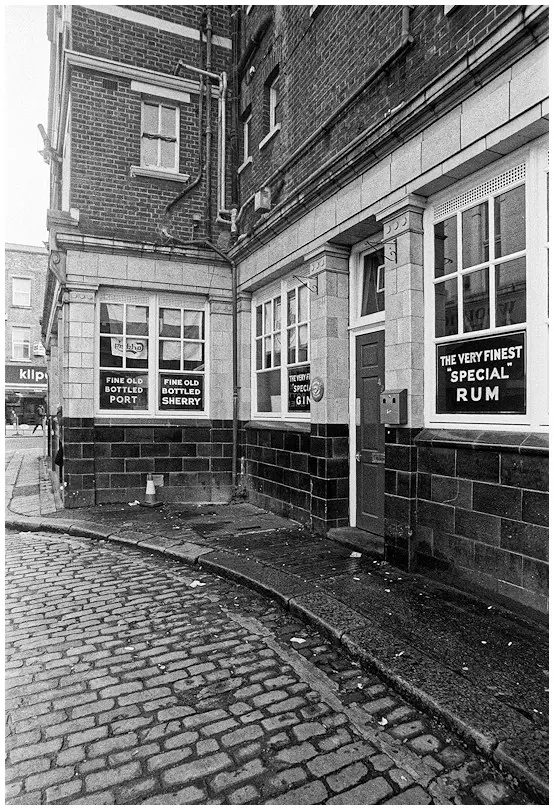
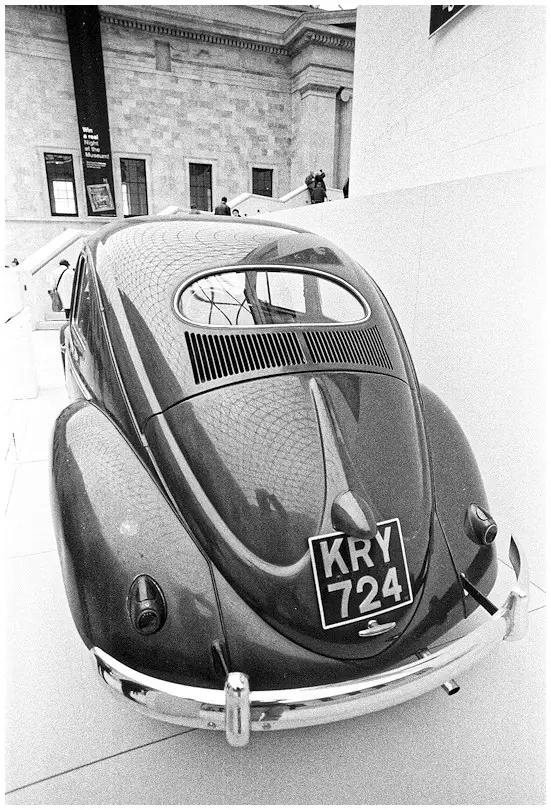
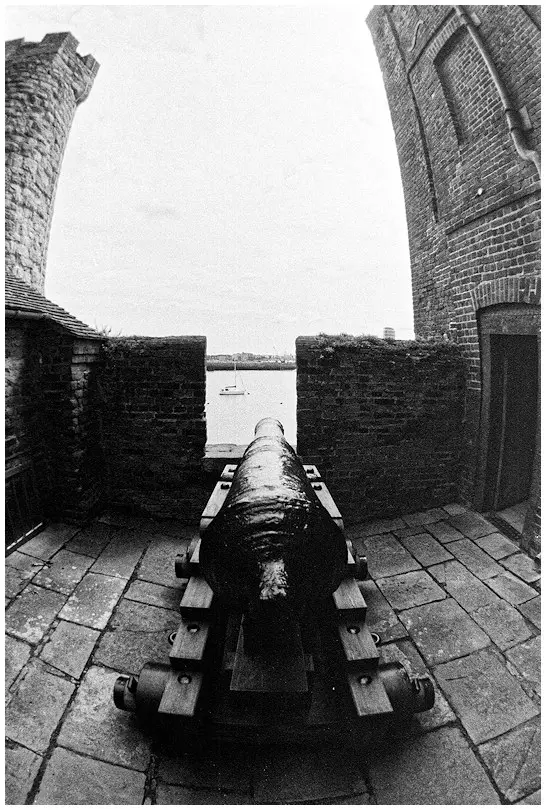
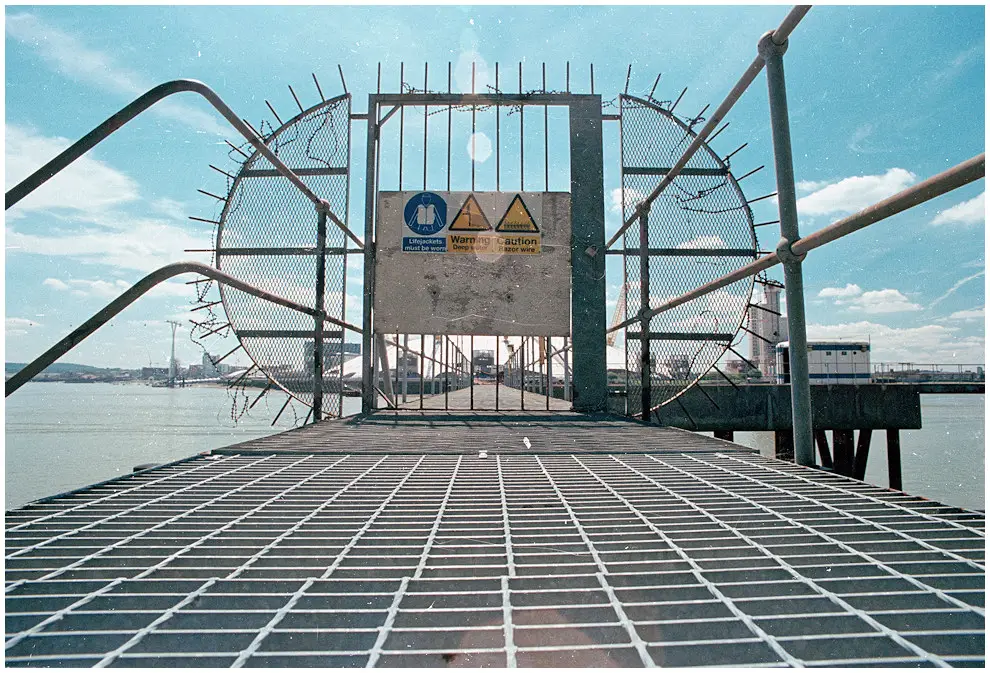
The Minolta Dynax 7 is a delight to use. It does just about anything you could ask of a film camera and has just about every feature bar an interchangeable prism and screen. It even looked good – those who have followed Minolta over the years will note that while they have produced some marvellous cameras, the likes of the SRT 101 (gawky), X/XK/XM and 800si (Frankenstein-like) and 9xi (a blob), were never going to win any beauty contents. With the 7, for the first time since the XD7/XD11, they produced something that was almost pretty, in addition to being state-of-the-art.
The bottom line? The Minolta Dynax 7 makes me want to be a better photographer.
More of my reviews can be found here
Share this post:
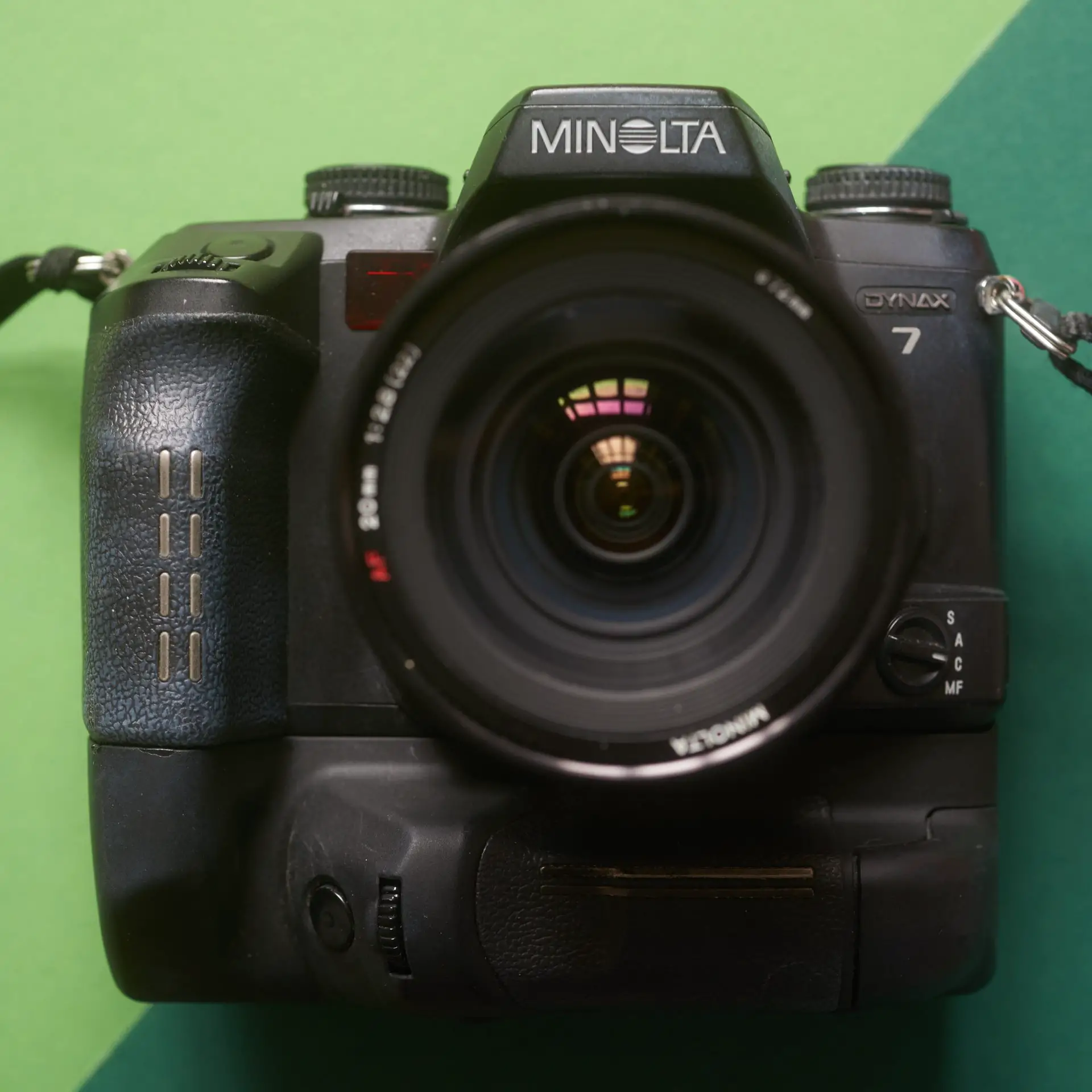








Comments
evan bedford on Minolta Dynax 7 Review (aka Minolta a-7 & Maxxum 7) – As good as it gets – By Bob Janes
Comment posted: 10/07/2020
Bill Thoo on Minolta Dynax 7 Review (aka Minolta a-7 & Maxxum 7) – As good as it gets – By Bob Janes
Comment posted: 11/07/2020
Jerome C on Minolta Dynax 7 Review (aka Minolta a-7 & Maxxum 7) – As good as it gets – By Bob Janes
Comment posted: 11/07/2020
Sroyon on Minolta Dynax 7 Review (aka Minolta a-7 & Maxxum 7) – As good as it gets – By Bob Janes
Comment posted: 11/07/2020
Comment posted: 11/07/2020
Murray Kriner on Minolta Dynax 7 Review (aka Minolta a-7 & Maxxum 7) – As good as it gets – By Bob Janes
Comment posted: 11/07/2020
Victor on Minolta Dynax 7 Review (aka Minolta a-7 & Maxxum 7) – As good as it gets – By Bob Janes
Comment posted: 11/07/2020
Comment posted: 11/07/2020
Comment posted: 11/07/2020
Murray Kriner on Minolta Dynax 7 Review (aka Minolta a-7 & Maxxum 7) – As good as it gets – By Bob Janes
Comment posted: 11/03/2022
Though I only discovered the Maxxum 7 long after shooting the other aforementioned Minolta's; SRT's, the X-series, and her lesser cousins, I started with the earliest Konica line, and still use them when it requires a sledge hammer to a scalpel's work. Great photos.
Comment posted: 11/03/2022
Ibraar Hussain on Minolta Dynax 7 Review (aka Minolta a-7 & Maxxum 7) – As good as it gets – By Bob Janes
Comment posted: 17/02/2023
A great camera and my only AF 35mm SLR (I also have a Contax RTS II) and if you ask me I’d say it’s up there with the best of them including the Nikon F6.
Perfect in every way and fantastic metering with E6.
I also have it’s sister the Konica Minolta 7D which I love
Christian Hogue on Minolta Dynax 7 Review (aka Minolta a-7 & Maxxum 7) – As good as it gets – By Bob Janes
Comment posted: 11/10/2023
Comment posted: 11/10/2023